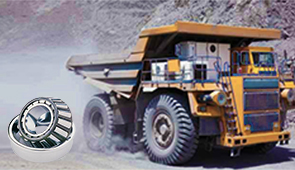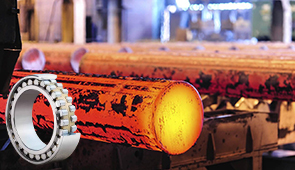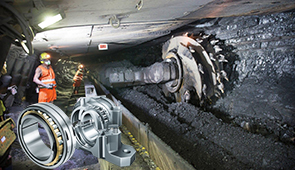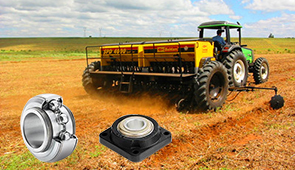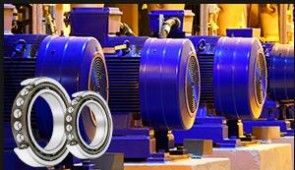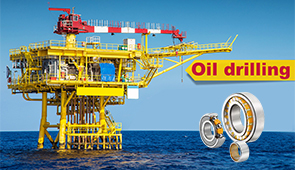Oil vs Grease: Understanding the Differences in Lubrication
Lubrication is one of the most critical factors in ensuring the longevity and efficiency of machinery, vehicles, and industrial equipment. However, when it comes to choosing the right lubricant, many are faced with a fundamental question: oil or grease? While both serve the key purpose of reducing friction and wear, their composition, application methods, and performance can vary widely. This article delves into the core differences between oil and grease, providing you with a comprehensive understanding of when and why to use each type. Whether you’re managing complex industrial systems or maintaining essential everyday equipment, knowing how to select the appropriate lubricant can make a significant difference in performance and reliability.
Introduction to Lubricants
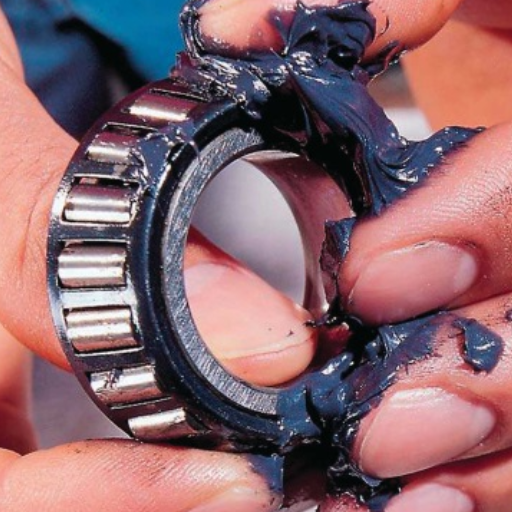
The Fundamental Differences Between Oil and Grease
Simplistically termed for lubrication, oil and grease are formulated for different uses because of their physical properties. Oil is a liquid that should flow freely and is suited for high-speed or precision machinery requiring low resistance and a high degree of heat dissipation. Conversely, grease is a semi-solid, formed from oil with the addition of a thickening agent. This somewhat sticky nature of grease allows it to sit still where applied, making it well-suited for components exposed to heavy loads, infrequent service, or harsh environments.
Oil and grease differ notably in their applications. Oil is applied by splashing, spraying, or circulating systems, so it will continuously be replenished and moved. It works best in systems where constant lubrication is indispensable, such as in engines and gearboxes. Grease is generally applied manually or via grease guns and adheres firmly to the surfaces. This makes it best-suited for sealed or enclosed systems such as bearings or joints, where lubrication for extended periods without frequent reapplication is desirable.
Further performance characteristics set it apart. Oil ensures better cooling by dispersing heat and is therefore required in any machine with exceedingly high operational temperatures. Grease acts as a thicker barrier from contaminants such as dirt or water, which helps keep the exposed component better protected. These differences should be kept well in mind while selecting any lubricant for enhanced performance, reliability, and longevity of the equipment.
Composition and Characteristics of Oil and Grease
The major difference between oil and grease lies in composition and their state of matter. Oil, in general, is an engine of a basic lubricant that works in liquid form, derived mainly from petroleum or synthetic sources. Grease, on the contrary, may be conceived as an oil that is thickened by the addition of a thickener, such as soaps or polymers, to yield a semi-solid or solid structure. The semi-solid nature of the grease allows it to stay where it is needed within machinery components, mainly in circumstances where re-lubrication isn’t conveniently possible.
The major characteristic of oil is to flow freely and thus provide adequate lubrication for ongoing uses such as engines and hydraulic systems. Its relatively low viscosity is exploited in reducing friction and conducting away heat in high-speed, high-temperature applications. Synthetic oils are, in fact, especially engineered to withstand chemical degradation, to last longer, and to perform well in extremes of temperature.
Grease finds its application where lubrication is required to last for a very long time under conditions involving slight movements. The thickener, coupled with the base oil in grease, forms a matrix that traps the base oil and provides lubrication for a longer period. Simultaneously, it shields against contamination by water, dust, and other foreign substances. This property makes grease well suited for machinery functioning on an intermittent basis or under high loads. Though the heat dissipation is not one of its strong points, it thus limits its use in those applications where sustained high temperatures or rapid movements are involved. Choosing either an oil or a grease is very much based on the actual operating requirements, environmental conditions, and maintenance constraints of the machinery under consideration.
Applications of Oil and Grease in Various Industries
Being an important lubricant, the application of oil and grease spans across a myriad of industrial sectors. These lubricants play a vital role in ensuring efficient operation, smoothing wear, and extending equipment life.
- Automotive Industry: Oils in loads of different measures tend to be widely used for lubricating engines and transmissions, and hydraulics in the automotive domain due to their tendency to flow consistently under temperature and load variations. Wheel bearings, chassis components, and universal joints usually receive heavy applications of grease, where their ability to cling for long periods as a lubricant is just what is required, especially when those parts undergo intermittent motion or heavy loads.
- Manufacturing Industry: Grease for industrial machinery like conveyor systems, presses, and milling machines is generally used for bearings and bushings that operate under extreme pressure at low speed. Oil, on the contrary, is used in high-speed components like gearboxes and spindles, where heat dissipation and continuous lubrication are required.
- Aerospace Industry: In the aerospace sector, lubricants are requisite to function under extreme ambient temperature ranges. Synthetic oils are often used for jet engines and hydraulic systems, providing stability at very high altitudes and temperatures. Greases are used in actuator mechanisms and landing gear assemblies, where long-term lubrication is needed in tight, enclosed spaces.
- Marine Industry: The marine applications require their lubricants to be water-resistant and anti-corrosive. Grease is an important factor in protecting the exposed parts, such as rudder shafts and propeller assemblies, from the effects of the marine environment. The oils are used in engine systems and hydraulic systems for smooth operation and heat management.
- Mining Industry: In heavy loading and harsh working conditions, the mining ministry provides services. Grease lubricates slow-moving, highly loaded components, such as bucket pins or slewing rings. Oil for gearboxes, engines, and hydraulic systems is needed for fluid movement and cooling to ensure the uninterrupted operation of the machinery.
The choice between oil and grease in these industries depends on load conditions, operating temperature, maintenance interval, and environmental factors. These lubricants are highly engineered to meet extremely specific performance, which guarantees that they function optimally once applied in a specific operation.
Advantages and Disadvantages
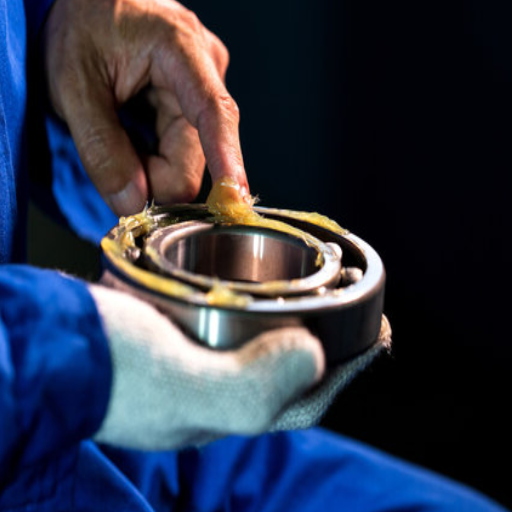
Benefits of Using Oil as a Lubricant
- Efficient Heat Dissipation: Oil is an excellent medium to dissipate heat generated in the interiors of moving components, especially at higher speeds or temperatures. As studies suggest, depending on the application, an oil system may reduce the temperature of operation by about 20-30% because the oil flows and carries away heat from frictional surfaces.
- Better Lubrication in Closer Quarters: Being a fluid, oil can reach and lubricate complex and tight areas in which grease may not be equally effective. This makes oil fit for gears, chains, and hydraulic pumps.
- Cleaner Working Environment: Oil is circulated through filters that clean out debris, dirt, and wear particles from the environment. This removal of contaminants extends both the life of the lubricant and the machine, thus giving rise to cleaner and productive work.
- Better Performance with Variable Temperature: Modern oils are enhanced with additives that aid in improving viscosity indices, thus remaining operative over various temperature ranges. Hence, for instance, some multi-grades can work satisfactorily in lubrication at temperatures from -30°F to over 300°F in certain industrial applications.
- Ease of Maintenance and Monitoring: It becomes easier to check out things with the lubricant in oil systems, either through a dipstick or sensors that help in the replacement or adjustments of lubricant in a timely manner. Oil analysis programs have also been adopted in many industries, with around a 40% reduction in unscheduled downtime, as they present an early indication of potential failure within systems.
Benefits of Using Grease as a Lubricant
- Superior Adhesion and Stay-in-Place Properties: Grease offers superb adhesion to surfaces, thus ensuring that it remains in place under heavy loads and during quick movements. Since vibration-high and shock load applications make grease extremely helpful. For instance, research has found grease to reduce lubricant displacement up to 35% as compared with oil in heavy machinery operations.
- Enhanced Sealing Ability: The semi-solid consistency of grease forms a barrier against contaminants, such as water, dust, and debris. This sealing property comes into play especially in cases where the environment could potentially expose the system to external elements, which could jeopardize system performance, such as in agricultural or construction machinery. Studies show that grease lubrication can keep ingress contamination to a minimum by nearly 25%.
- Extended Lubrication Intervals: Grease requires less frequent reapplication due to the fact that it tends to last longer at the application point than oil. This extended life proves especially handy with machinery or equipment that is hard to reach for grease lubrication, where the lubrication interval can be extended by as much as 50%, saving on maintenance and labor costs.
- High-Temperature Resistance and Stability: A selected range of grease will work at temperatures so extreme as to be in the vicinity of -40°F and, in some cases, over 500°F. These are qualities that call for application in cases such as heavy-duty bearings and furnaces, where thermal stability is the essential factor for the assurance of the prevention of breakdowns.
- Load-Bearing Capacity and Shock Absorption: Grease is more suitable for high-pressure load-bearing applications where the grease film has to be maintained constantly between surfaces. Laboratory tests have proven that greases, with specific thickeners and additives, can sustain loads that are a maximum of 20% higher than those of generic lubricating oils, reducing wear and enhancing the lifespan of components.
Drawbacks of Oil vs Grease
Oil systems need to be maintained often and kept sealed, whereas grease produces heat, uses more power, and is unsuitable for machines that move at high frequency.
|
Aspect |
Oil |
Grease |
|---|---|---|
|
Cooling |
Excellent |
Poor |
|
Efficiency |
High |
Low |
|
Upkeep |
Frequent |
Minimal |
|
System Design |
Enclosed |
Open |
|
Speed Fit |
High-speed |
Low-speed |
|
Cleanliness |
Vulnerable |
Protective |
|
Heat Output |
Low |
High |
|
Thickness |
Thin |
Thick |
|
Barrier |
Weak |
Strong |
|
Usage |
Fast machines |
Heavy-duty systems |
Maintenance Tips for Optimal Lubrication
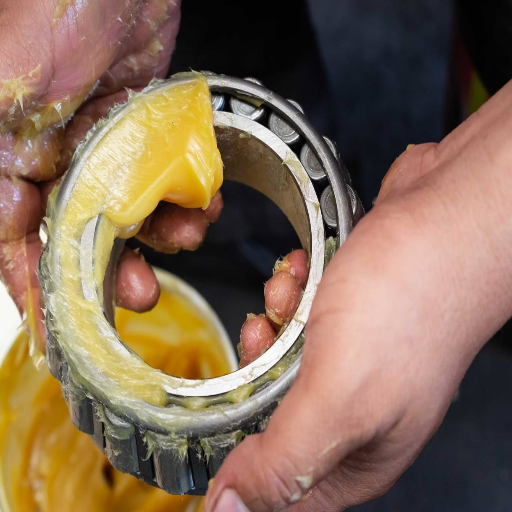
Best Practices for Using Oil
The efficient functioning and longevity of machinery rely greatly on adhering to exact best oil usage practices. First of all, oil grade selection should be adequate for the equipment and operating conditions, such as load, temperature ranges, speed, etc. Always choose oils meeting OEM specs to ensure compatibility and performance integrity.
Monitor the oil condition regularly. Conduct oil analysis for contamination, changes in viscosity, or even the presence of wear particles. Doing so could prevent catastrophic failure and optimize maintenance intervals. Moreover, seal the lubrication system to exclude any possibility of dirt or moisture ingress because these contaminants would compromise oil quality.
Storage and handling processes go side by side with this. Store oils in a clean, dry environment so they can be safeguarded from direct sunlight and extreme temperature fluctuation, all of which could contribute to expediting oil degeneration. Also, use only dedicated tools during oil transfer, and likewise, dedicated containers. This helps minimize the risk of contamination.
Establishing a good lubrication routine forms another pillar of this task. Always top up or replace the oil regularly, or per the recommended manufacturer’s schedule, to sustain the highest operational efficiency. Following such detailed procedures lessens downtime, cuts operating costs, and greatly extends machine life.
Best Practices for Using Grease
Lubricant selection and application play vital roles in the proper functioning and longevity of machinery. Make sure to select the proper type of grease for the job, considering loading, speed, temperature, water resistance, and compatibility with existing lubricants. Grease consistency, which ranges from fluid-like to stiff (as assigned by the NLGI grades), should be suitable to meet the working conditions of the equipment.
Pre-greasing, keep the lubrication point clean, without contaminants. Such contaminants in grease may thereby cause abrasive wear and corrosion, leading to early failure. Use grease guns or automatic grease systems that are suitable and calibrated correctly in terms of their output, since over- and under-greasing may cause problems such as seal damage and inadequate lubrication, respectively. An equal distribution of grease on the critical components should be applied with the recommended quantity from the equipment manufacturer.
Regularly monitor the performance of grease by scheduling periodic inspections and sampling, which allows detection of signs such as oxidation, contamination, or grease hardening, indicating the need for reapplication or a change to another product. Also, maintain grease in a sealed container, away from moisture, dust, and extreme temperatures. This keeps the grease in its usable form.
If these best practices are followed, they can drastically cut down maintenance costs, provide more reliability, and lengthen equipment life; hence, bestowing efficiency on industrial operations.
Prolonging the Lifespan of Machinery with Proper Lubrication
Being properly lubricated is one of the major machinery maintenance areas that directly impact performance, efficiency, and the life span of equipment. Its presence or absence greatly determines friction between moving parts, which friction may or may not cause wear and tear. Without adequate lubrication, friction may result in more heating up of parts, thereby causing fast wear of components and downtimes for costly repairs or even replacements. Depending on various circumstances like high temperature, gravity loads, or even high-speed environment, a proper lubricant must be selected so as not to counteract machine performance.
Lubricants should be monitored and analyzed regularly alongside these activities to extend the life of the machine. Investigations like oil sample analysis, spectrometric tests, and others can reveal the condition of contamination of the lubricant, viscosity changes, and the presence or absence of wear particles. These workings help inform decisions about when to replace a lubricant or plan a maintenance activity. Furthermore, advanced monitoring techniques for full automatic real-time lubrication control, powered by predictive maintenance and equipped sensors, can also warn operators about abnormal conditions before these lead to potential failures.
Another area where lubrication technology brings benefits to machine performance is in applications where synthetic oils or nanotechnology-based lubricants are considered. These advanced lubricants have more thermal stability, hinder oxidation better, and are more compatible with extreme environments. Used alongside meticulous maintenance regimes, these improvements may considerably lower power consumption, enhance efficiency strongly, and further extend the life expectancy of vital machine parts. Focusing on work-appropriate lubrication, industries can be confident in gaining reliability, lowered operating expenses, and sustainable productivity.
Choosing the Right Lubricant for Specific Applications
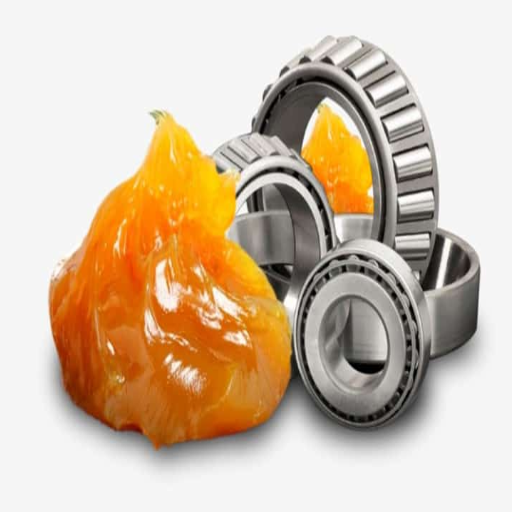
Guidelines for Automotive Applications
Selecting automotive lubricants involves an intimate knowledge of the engine or component requirements and operating conditions. Lubricants in automotive engines are expected to have defined viscosity grades so that lubricants will perform efficiently at different temperatures as recommended by the manufacturer. In terms of engine compatibility and reliability, lubricants must meet the industrial standards.
The type of fuel used may also affect lubricant choice, while specific performance attributes may be of concern, such as fuel economy, oxygen capacity, or soot handling. Synthetic lubricants are usually the best choice for high-end automotive applications since modern induction engines or hybrid vehicles require thermal stability and evaporation minimums that these generally offer over conventional oils.
It is always advisable to monitor and analyze the development of lubricant properties continuously, for example, viscosity index, TBN, and contamination level are considered, as these could eventually explain the lubricant’s performance or its life span and thus lead to timely maintenance decisions. In the end, following OEM recommendations and updating them regularly as engine designs improve will ensure maximum engine life and minimum wear under tough operating conditions.
Considerations for Manufacturing Equipment
Capitalizing on regular maintenance and inspection programs enhances the productivity of a manufacturing operation. Preventive measures, such as monitoring equipment for early signs of wear or malfunction, can keep minor troubles from turning into great big problems, hence reducing downtime and promoting productivity. I place quite a bit of emphasis on lubricant analysis concerning critical aspects such as viscosity consistency, contaminants, and wear indicators for achieving adequate equipment conditions under variable load situations.
I take equipment-specific requirements into serious consideration in terms of the operating environment, load requirements, and output criteria. It is important to select materials and components that can withstand the harsh industrial environment. And I also ensure that OEM specs are followed to the letter, as following these will ensure not only the efficiency of the equipment but also the long-term durability of the equipment itself. Giving consideration to updated practices with the availability of new technologies keeps manufacturing processes competitive and within standard.
In addition to this, the integration of condition monitoring systems within the manufacturing equipment is another critical step I push. Through such systems, real-time data on equipment performance and variations is obtained so immediate action can be instituted as necessary. This technology, thus, enhances the predictive maintenance culture wherein I can resolve possible issues before they become outright failures. Combining the technological prowess of monitoring and measurement systems with a well-disciplined maintenance approach guarantees smooth and uninterrupted operations in tandem with production objectives.
Heavy Equipment Lubrication Choices
Selection of coarse lubricator oils for any machinery is considered one of the primary steps for its effective performance, wear reduction, and extension of machinery life. Lubricants should be selected for the prevailing operational conditions concerning load, temperature range, and type of equipment to provide maximum service. High viscosity oils would be apt for heavily loaded components, whereas lower viscosity would be ideal for high-speed machinery of precision tolerances.
With the evolution of lubrication techniques, synthetic and semi-synthetic oils have been introduced, having better thermal stability and resistance to oxidation than their traditional mineral oil counterparts. However, these properties allow them to perform well under extreme conditions, such as high heat for long durations. Also, the additives in the form of chemicals in modern lubricants enormously contribute to the reduction of friction within the system, corrosion, as well as the accumulation of various contaminants.
Recent trends suggest that condition-based monitoring, especially oil analysis, has become standard in high-performance maintenance strategies. By periodically monitoring several factors (including viscosity, contamination, and additive depletion trends), operators can decide upon oil change intervals and possible mechanical problems to address. This not only results in increased operational uptime but is also considered by predictive maintenance as an alternative to a lubricant strategy.
Common Misconceptions about Oil and Grease
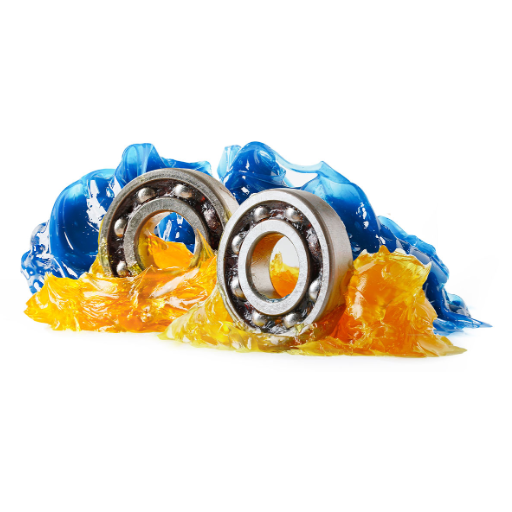
Myths Surrounding Oil as a Lubricant
One of the most common myths around oils as a lubricant is the view that all oils function the same way, irrespective of their composition or suitability for a specific application. This incorrect conception often leads to the wrong choice of lubricants, contributing to faster wear and tear, lower efficiency, and sometimes complete failure of the equipment. Well-engineered lubricants suit various operational conditions, varying by viscosity grade, additive packages, and thermal stability. For example, synthetic oils offer better performance under temperature extremes because of their better oxidation resistance and molecular uniformity.
A second common myth is that oil, so long as it looks clear, remains efficient forever. This is quite far from the truth, as lubricant degradation occurs at the molecular level, with oxidation, thermal breakdown, and contamination decreasing the efficacy of lubricants through time. Oil analysis programs come in handy in quantifying the degradation indicators such as Total Acid Number (TAN), water content, and particulate contamination to detect a potential need for intervention.
These operational people also believe that the higher the viscosity, the better an oil is because it feels thick and protective. Research shows that if inappropriate viscosity lubricants are selected, friction, energy consumption, and thermal buildup levels will be increased, finally damaging the critical components. The most suitable viscosity varies with the temperature, load, and speed at which the machine works.
Avoiding these myths with solutions based on proven practices will help engineers and operators to avoid costly blemishes, which, in turn, extend the efficiency of lubricants for a time frame worthy of huge use and reduced downtime in equipment.
Misunderstandings about Grease Usage
One persistent misconception relating to grease application is that more grease equals better lubrication. Over-greasing generates extra heat through churning and results in premature failure and leakage of the excess lubricant. Conversely, under-greasing results in a lack of lubrication and increased wear of mechanical components. Among the important selection criteria, one must rank the correct re-lubrication interval and quantity, bearing speed, loading, and environment.
Another big myth is that all greases are the same. Greases are formulated from base oils, thickeners, and additives for specific applications. For instance, a calcium sulfonate grease having excellent corrosion resistance may work well for the marine environment, but cannot stand up to very high temperatures where a polyurea grease would. Using the wrong type of grease will create incompatibility between the grease and the used component and will degrade performance.
Some operators completely ignore grease compatibility when changing greases. Mixing incompatible greases causes the breakdown of the thickener matrix, which causes the grease to lose its structural integrity and lubrication capability to a drastic extent. A prior consultation of compatibility charts or manufacturer recommendations is essential before any change is attempted.
It is these myths addressed through sound engineering and modern-day best practices that ensure consistent reliability and longevity of lubricated systems. The further use of data-driven methods to spot lubrication problems, such as vibration analysis and grease sampling, enables operators to effectively predict and avert lubrication failures.
Clarifying the Differences Between Oil and Grease
Oil and grease, two essential lubricants, differ greatly from each other in their composition, uses, and performance characteristics. Oil is a free-flowing liquid lubricant made with a base oil and additives meant to reduce friction, improve performance, and protect surfaces from frictional wear. Thus, it is best to be used in high-speed machines and precision ones in which heat dissipation and resistance are to be held to the minimum. Other ways of use for these fluids are in engine lubrication, gear mechanisms, and hydraulics, wherein their circulation is a key feature in the overall smoothness of the system.
On the other hand, grease consists of oil as its lubricating fluid and a thickening agent (metallic soap, usually) to give it a semisolid feel. This offers grease some remained precedence in applications where re-lubrication is a rarity and a lot of contamination or other environmental extremities remain a concern. It is used for bearing grease, joint grease, and grease for industrial machinery under heavy load or oscillatory motions. Being thick, they also seal a little better, keeping out dust, dirt, and moisture.
Other key differences arise from maintenance and application. Oils are frequently dispensed via reservoirs or circulation systems and then kept under periodic observation for their optimal operating level. In contrast, the use of grease lowers the chances of leakage of lubricant. But in some cases, it may cause other problems, like overheating or resistance. The right choice of lubricant should depend on factors such as operating temperature, load, speed, and environmental conditions. By understanding lubrication and using the latest technologies in lubrication simultaneously, operators should be able to truly optimize machinery performance, enhance reliability, and reduce downtime.
Frequently Asked Questions (FAQ)
Q: What is the main difference between oil and grease?
A: The main difference between oil and grease lies in their composition and application. Oil is a liquid lubricant that flows freely and is typically used in applications where high-speed movement is involved. Grease, on the other hand, is a semi-solid lubricant that combines oil with a thickening agent, making it ideal for applications where a longer-lasting lubricant is needed and where the movement is slower or intermittent.
Q: When should I use oil instead of grease?
A: You should use oil instead of grease in situations where high temperatures and high speeds are prevalent, such as in engines or machinery with rotating parts. Oil provides better fluidity and heat dissipation, reducing friction and wear in these environments.
Q: Is grease better than oil for protecting against rust?
A: Grease is generally better than oil for protecting against rust, as its thicker consistency allows it to adhere to surfaces more effectively, creating a barrier against moisture and contaminants. This makes grease a preferred choice for outdoor equipment and machinery exposed to harsh conditions.
Q: Can I mix oil and grease?
A: Mixing oil and grease is generally not recommended, as it can lead to reduced lubrication effectiveness and potential breakdown of the lubricant. Different types of oils and greases have varying chemical compositions, which may not be compatible. Always consult product guidelines before mixing.
Q: What are the common types of oil used in lubrication?
A: Common types of oil used in lubrication include mineral oil, synthetic oil, and vegetable oil. Each type has its own properties and applications, with synthetic oils often providing better performance in extreme temperatures and conditions compared to mineral oils.
Q: How often should I apply grease compared to oil?
A: The frequency of application depends on the specific equipment and its usage. Grease typically lasts longer than oil due to its thicker consistency, so it may require less frequent application. However, oil may need to be replenished more often, especially in high-speed applications where it is subject to evaporation or degradation.
Q: What are the advantages of using grease over oil?
A: The advantages of using grease over oil include better adhesion to surfaces, reduced leakage, and longer-lasting lubrication. Grease also provides increased protection against contaminants and moisture, making it ideal for use in outdoor environments where equipment is exposed to the elements.
Q: How do temperature changes affect oil vs grease performance?
A: Temperature changes can significantly affect the performance of both oil and grease. Oils may thin out and lose viscosity at high temperatures, while greases can become too hard or brittle in cold conditions. It is important to choose the right lubricant based on the temperature range of the application to ensure optimal performance.
Q: Can oil be used in place of grease in all applications?
A: No, oil cannot be used in place of grease in all applications. While oil is suitable for high-speed machinery and applications where fluidity is essential, grease is necessary for slower-moving parts and situations where lubrication needs to stay in place for extended periods. Choosing the right type of lubricant is crucial for effective operation and the longevity of equipment.
UCTH213-40J-300 with Setscrew(inch)
CNSORDERNO: Normal-duty(2)
TOGN: UCTH213-40J-300
SDI: B-R1/8
SD: 2 1/2
UCTH212-39J-300 with Setscrew(inch)
CNSORDERNO: Normal-duty(2)
TOGN: UCTH212-39J-300
SDI: B-R1/8
SD: 2 7/16
UCTH212-38J-300 with Setscrew(inch)
CNSORDERNO: Normal-duty(2)
TOGN: UCTH212-38J-300
SDI: B-R1/8
SD: 2 3/8
UCTH212-36J-300 with Setscrew(inch)
CNSORDERNO: Normal-duty(2)
TOGN: UCTH212-36J-300
SDI: B-R1/8
SD: 2 1/4
UCTH211-35J-300 with Setscrew(inch)
CNSORDERNO: Normal-duty(2)
TOGN: UCTH211-35J-300
SDI: B-R1/8
SD: 2 3/16
UCTH211-34J-300 with Setscrew(inch)
CNSORDERNO: Normal-duty(2)
TOGN: UCTH211-34J-300
SDI: B-R1/8
SD: 2 1/8









